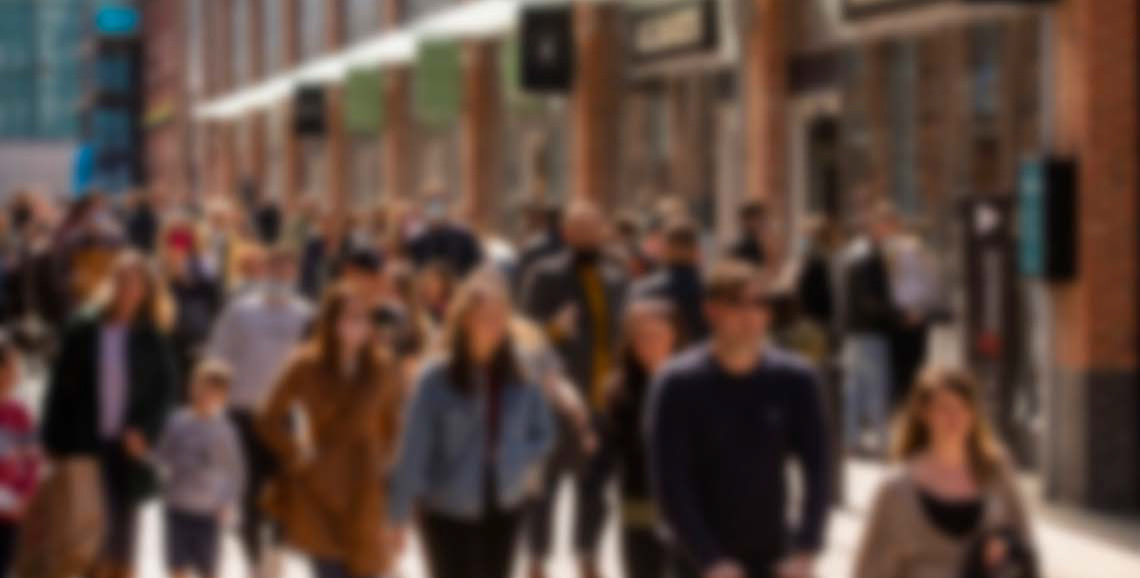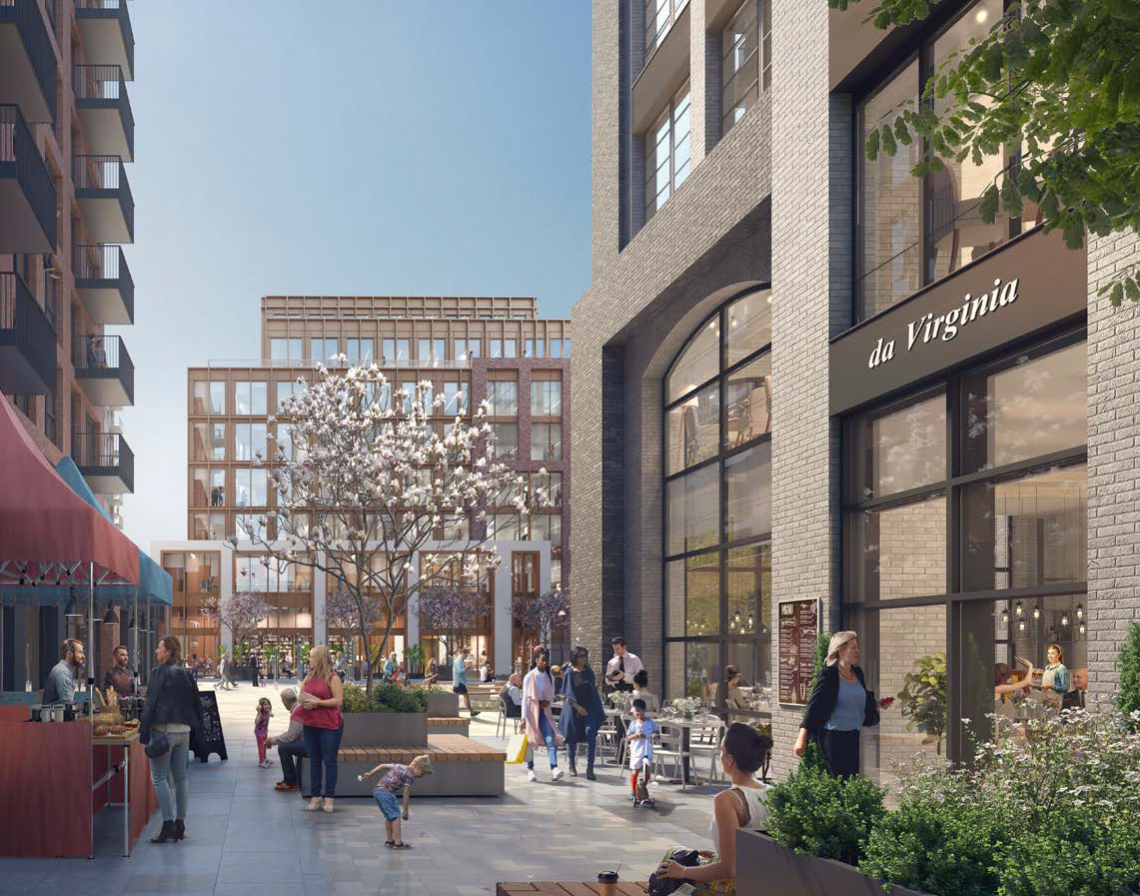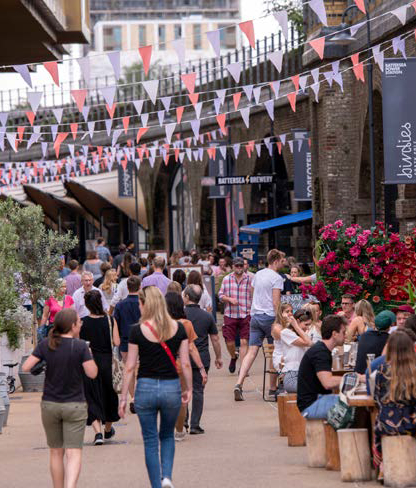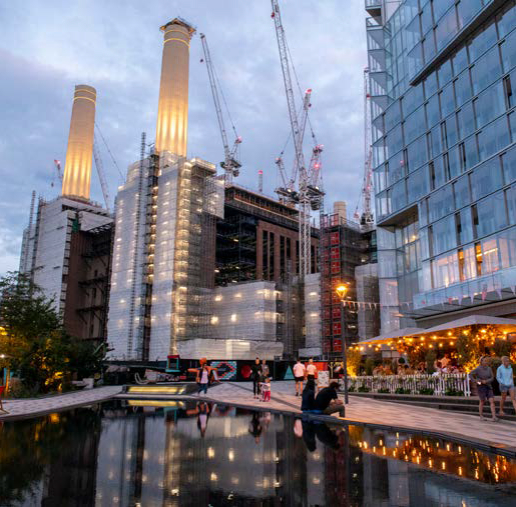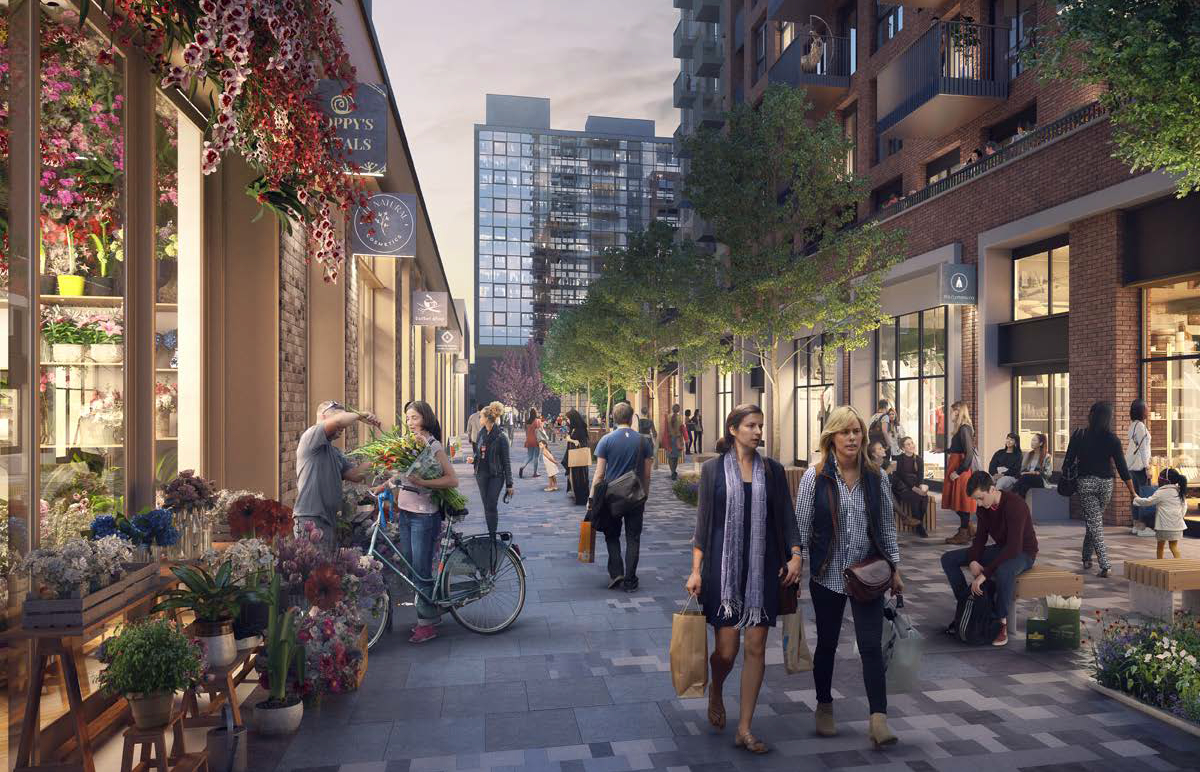Why greener spaces are flexible spaces
THE CASE FOR A BLENDED APPROACH TO ECONOMIC AND ENVIRONMENTAL SUSTAINABILITY
WHY BLENDED PLACES ARE GREENER
The 15-minute city concept is all about providing what communities need in close proximity, blending work, home and social lives with civic, health, wellbeing, education and transport. This enhances the community spirit and loyalty of that place, which in turn is good for the businesses that operate there. The blend of property uses is key; town centres need to be thought of as mixed-use consumer hubs and not just places to shop. The retail-only model is largely broken.
There are significant economic and environmental efficiencies to be made by creating busy places, and mixed-use town centres are at the heart of this. A broader church of occupation typologies with cross-pollination of uses increases footfall, but decreases journeys as people need to travel less to reach the things they need. Ensuring that buildings are used throughout the day optimises the energy required to heat or light them, and building in flexibility of space means reducing the financial and environmental burden, should occupational needs change in the future. Town centres need to be viewed as ecosystems of different but connected uses.
This is our vision for Nicholson Quarter, a 1.4million sq ft town centre repurposing development in Maidenhead with sustainability, social wellbeing, and the environment at the core of delivering this goal. All while being committed to generating consistently strong financial returns for shareholders and investors.
Investors want occupiers, occupiers want customers and customers want… Well, what do they want? Unsurprisingly they want active places, nice environments, access to services or goods, and places to have fun. They want to feel a part of a community, and increasingly, a reduction of their impact on the planet is becoming a focus. Fail to deliver this to customers and fail to deliver to investors. Therefore, the basis of any future town centre investment strategy must be around placemaking, sustainability and relevance.
EVOLVING THE BUILT ENVIRONMENT
It’s certainly more complicated to build than it used to be, but it is really exciting to be at the forefront of creating new places that will be central to the lives of communities into the next century. Our development experiences at Battersea Power Station, Gunwharf Quays, Orpington and Maidenhead are all very different, but the essence is the same: evolve and enhance these places to reflect the needs of their communities and wider societal benefits.
The debate on rebuild or retrofit rolls on, with pros and cons for each from an environmental perspective. In most instances, we would not be able to develop such ambitious town centre developments within the existing building fabric. Although essentially starting the embodied carbon journey again, rebuilding does have some significant advantages, both in terms of creating relevant and interesting places that are far more useful going forwards, but also in terms of the opportunity for building with far better and greener building standards and design.
Taking Maidenhead as an example, the proposed development is seeking to design in resilience to climate change and to increase the ecological value of the site. Its buildings need to consume less energy, with fewer associated carbon emissions. A development’s layout and building orientation can have an impact on energy consumption, due to the interactions of ‘passive’ natural systems such as solar heat, natural light, evaporative cooling and displacement ventilation. Its buildings’ massing can also influence its energy performance, with all external surfaces (walls, floors, roofs etc.) acting as heat loss elements. Therefore, massing buildings to reduce external surface areas for individual units can help reduce heat demand for these units within a building. Individual units will also derive a beneficial ‘shelter factor’ from other units, as well as corridors and circulation space.
Buildings then use ‘active’ systems that provide high standard construction methods, such as BREEAM, thermal efficiency of the building envelope, and are fitted with natural systems and low- and zero-carbon technologies to reduce energy consumption. There is then ongoing management for water resources, enhanced biodiversity, operational waste and recycling, reducing pollution, as well as responsible sourcing and recycling of construction materials.


